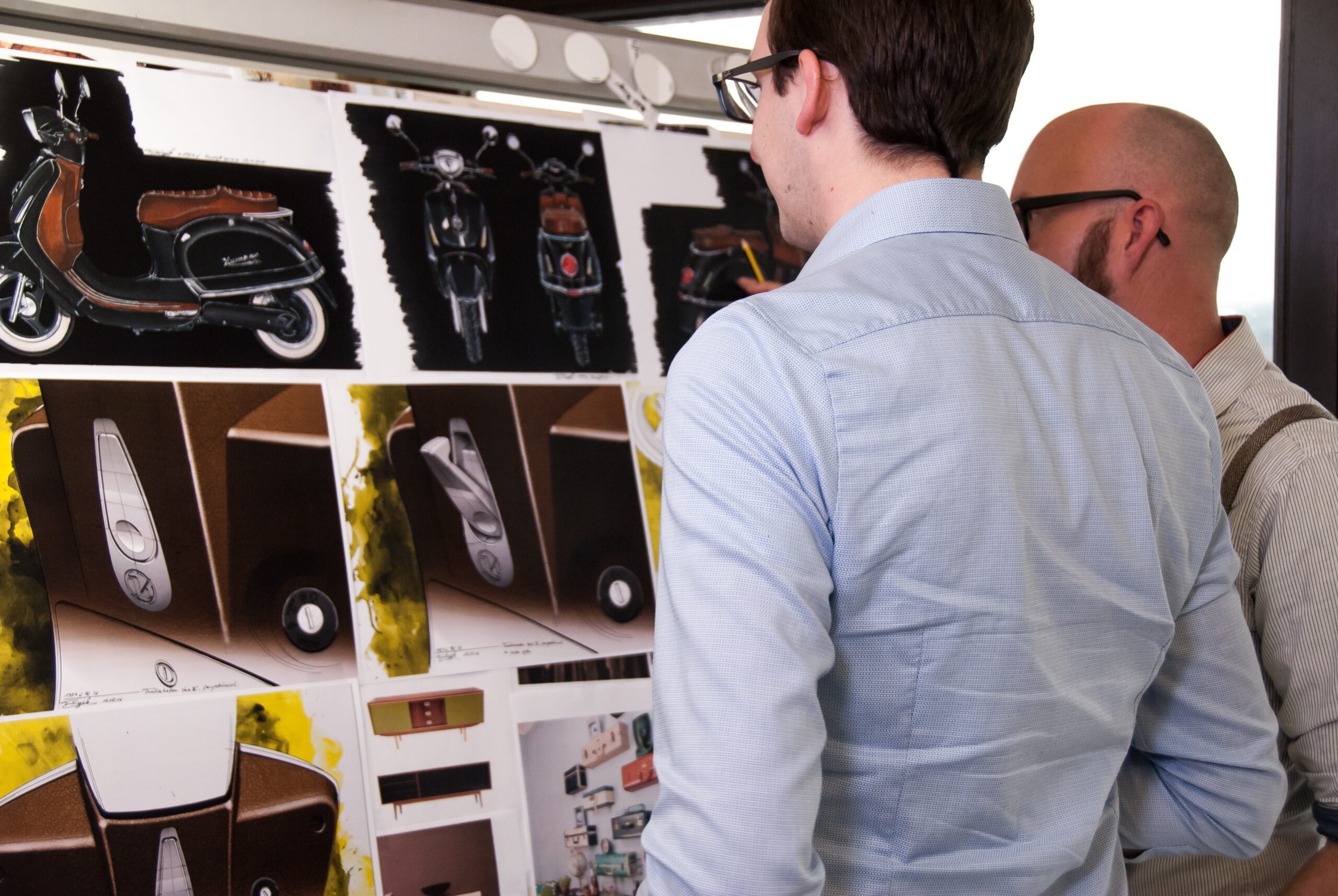In the realm of business, aesthetics wield a powerful influence over consumer perception and engagement. To many, the visual allure of your product plays a pivotal role in capturing attention, driving your sales, and growing your business. From packaging to design, every aspect contributes to the overall aesthetic appeal. In this blog, we unravel the art of making your product beautiful and irresistible to your target audience.
Get Back To Basics
In the pursuit of crafting a captivating aesthetic, it’s important to get back to basics. While every business aspires to create a stunning visual experience, the creative journey can inadvertently lead to over-complicated designs and excessive features. Stripping away the unnecessary and focusing on the fundamental elements of design can often lead to a more impactful and visually pleasing result.
Apple’s Minimalistic Look
Embracing clean and simple design aesthetics has proven to be a recipe for success in many industries. Think about Apple’s iconic product design – from the sleek lines of their iPhones to the minimalistic elegance of their MacBook laptops. These devices stand out for their simplicity, user-friendliness, and uncluttered appearance, creating a sense of sophistication and desirability.
Nike’s Iconic Swoosh
Another notable example is the branding of Nike. Their iconic Swoosh logo is a masterpiece of simplicity, instantly recognizable and representing the essence of their brand. This uncomplicated yet powerful design has become synonymous with athletic excellence and a winning mindset.
The Simplicity of Google’s Search Engine
The success of Google’s homepage lies in its simplicity. With just a search bar and logo, it delivers an uncluttered experience focused solely on its core function – searching the web. This minimalistic approach has made it a go-to platform for millions worldwide.
If you get stuck in the process, take a step back try revisiting the core principles of your product and discover what makes it unique. Starting from this point can serve as a guiding light, illuminating your path forward when you encounter challenges in the creative process.
Understand Your Audience’s Preferences
Before delving into the design process, it’s essential to understand the preferences and tastes of your target audience. During your product’s market research process, you should’ve already delved into understanding your target audience and demographic. You’ve explored the nuances of their preferences, needs, and aspirations. Now, as you embark on the journey of crafting a visually appealing design, this knowledge becomes your guiding star. Consider the primary goal of your product – whether it’s simplifying tasks, enhancing experiences, or solving problems for your audience. Reflect on the value your product delivers to their lives. Every element of your design should resonate with this mission, creating a harmonious synergy between function and aesthetics.
Running a competitor analysis can provide further insights. Examine what’s currently resonating with your audience in the market and discern the gaps that remain to be filled. This process is not about copying but about identifying areas where you can excel by offering a more refined, user-centric design. Successful companies worldwide employ this approach to constantly improve and innovate. By building on what works and infusing your unique value proposition, you can create a design that captivates your audience’s hearts and minds.
Create a Creative Packaging Design
Packaging goes beyond being a mere container – it’s an extension of your product’s aesthetics and a powerful tool for making a memorable impact. Beyond its functional role of protecting the product, packaging serves as a tangible representation of your brand’s identity and values. In a world filled with choices, unique and creative packaging can instantly set your product apart from the competition.
When crafting packaging, think about how the design complements your brand story and product essence. Innovative shapes, materials, and finishes should not only be visually appealing but also resonate with your brand’s values and the emotions you want to evoke in your customers. For instance, an eco-friendly product might opt for sustainable and recyclable packaging materials, aligning with the brand’s commitment to the environment.
Unboxing experiences have gained immense significance in the digital age. An unboxing experience that surprises and delights customers can create a sense of anticipation and excitement that lingers long after the initial purchase. This can foster a deeper emotional connection between your customers and your brand. Think about elements like custom tissue paper, personalized notes, or even a small gift that adds an extra layer of value.
A well-designed package not only protects the product but also becomes a part of the overall customer experience. It enhances the perceived value of the product and can leave a lasting impression on your customers. As you delve into the world of packaging design, remember that it’s an opportunity to tell a story, invoke emotions, and reinforce your brand’s message. By investing in unique and creative packaging, you’re investing in creating a remarkable and unforgettable journey for your customers.
Typography Matters
“I learned about serif and san serif typefaces, about varying the amount of space between different letter combinations, about what makes great typography great. It was beautiful, historical, artistically subtle in a way that science can’t capture, and I found it fascinating.”
Typography is more than just words on a page; it’s a design element that conveys personality and mood, setting the tone for your brand. The selection of fonts becomes an artistic expression of your brand’s essence – whether that’s a playful, elegant, or professional demeanor. Yet, typography is not solely about aesthetics; it plays a pivotal role in readability and user experience. Striking the right balance between these aspects is key to captivating your audience.
When crafting your brand’s identity, delve into the universe of typefaces to find those that resonate most authentically with your message. Experimenting with font sizes, styles, and arrangements introduces an element of visual intrigue, guiding the reader’s eye and enhancing the overall design.
Test, Test, and Test
The journey of crafting a captivating aesthetic is a dynamic one, where adaptability and evolution are your allies. Aesthetic decisions should never remain stagnant; they should be in constant motion, just like the ever-changing currents of design trends and consumer preferences. In the fast-paced world of business, staying ahead means embracing a mindset of continuous improvement. Just as a musician practices their craft to stay in tune, your brand’s aesthetic should harmonize with the contemporary landscape. This means that even after the initial design is in place, the process is far from over.
Regular testing and iteration are the pillars upon which exceptional aesthetics are built. Collect feedback from your target audience, users, and stakeholders. This real-world input is a goldmine of insights that can unveil areas for enhancement and unanticipated perspectives. By listening to your audience, you’ll gain a profound understanding of how your product’s design resonates with them, allowing you to identify areas that might need tweaking or refining.
Ultimately, the aim is to maintain relevance and cultivate lasting appeal. Your audience’s preferences will shift over time, and their expectations will evolve. By keeping a watchful eye on these changes and actively responding to them, you position your product for continued success. The most resonant and engaging aesthetics are born from this commitment to adaptability, ensuring that your product remains a source of delight and value for your audience, now and into the future.
Don’t Be Afraid to Fail
In the dynamic world of business, the beauty of your product is a powerful tool for captivating hearts and minds. Crafting a captivating product goes beyond visual appeal; it’s about forging an emotional connection, delivering value, and leaving an everlasting mark on your audience. The product design process is not quick and easy. Just like a fine wine, perfection takes time to reach.
Embrace risks and embrace failure, for they are stepping stones towards the eventual masterpiece. While failures may be frequent, they pave the path to a beautiful, perfected product that yields incredible rewards.



